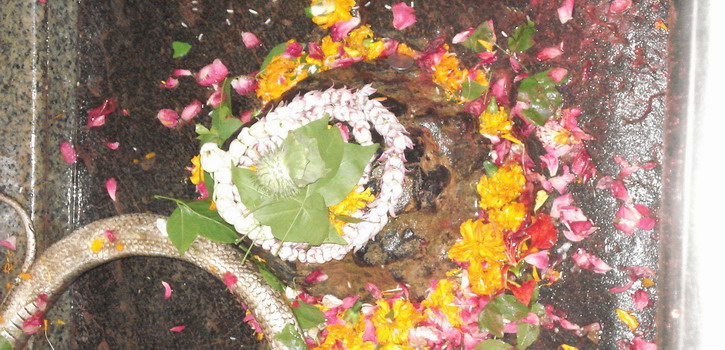Jyotirlingas hold immense spiritual significance in Hinduism as manifestations of Lord Shiva. There are 12 such revered shrines spread across India, each believed to be a radiant column of light (Jyoti) where Shiva appeared in a divine form. Among them, Omkareshwar stands out for both its sanctity and its mesmerizing location.
Situated in Madhya Pradesh, Omkareshwar Jyotirlinga is nestled on the serene island of Mandhata in the Narmada River. What makes it even more fascinating is the island’s natural shape, resembling the sacred symbol ‘Om’ (\u0913\u0902), a cosmic representation of the divine. Pilgrims flock here not just to seek blessings but also to immerse themselves in the tranquility and spiritual aura that the place exudes.
Omkareshwar Jyotirlinga Historical Background
Omkareshwar’s spiritual legacy is deeply embedded in ancient Hindu lore. According to popular legend, King Mandhata of the Ikshvaku dynasty was a devout worshipper of Lord Shiva. Impressed by his penance, Shiva manifested himself as a Jyotirlinga here, blessing the king and the land.
Another tale speaks of a great war between Devas and Danavas (gods and demons), where the Devas prayed to Lord Shiva for victory. Pleased by their devotion, Shiva appeared as a Jyotirlinga on this island, thus sanctifying it for eternity.
Omkareshwar is mentioned in sacred scriptures such as the Skanda Purana, which elaborates on its divine origin and spiritual prominence. Historically, the Paramara dynasty played a crucial role in temple construction and patronage. They established Omkareshwar as a significant center for Shaivite worship during their reign between the 9th and 14th centuries. The site attracted not just devotees but also scholars and sages, making it a vibrant spiritual hub.
Spiritual Significance
What sets Omkareshwar apart is the presence of two temples: Omkareshwar and Mamleshwar (also known as Amareshwar). While both are considered sacred, there has been a long-standing belief that the actual Jyotirlinga resides in both temples, symbolizing the oneness of divinity across dual forms.
The Narmada River, considered one of the holiest rivers in India, flows around the island, enhancing the site’s sanctity. Rituals like parikrama (circumambulation) around the island and holy dips in the river are believed to cleanse one of sins.
The place also shares a deep connection with Adi Shankaracharya, the great philosopher and theologian. It is said he met his guru Govind Bhagwatpad here, marking a pivotal point in his spiritual journey. The cave where this encounter took place is a revered site visited by thousands.
Architectural Details
Omkareshwar Temple is a brilliant example of North Indian Nagara-style architecture. The temple’s spire rises elegantly, adorned with intricate carvings and sculptures that narrate tales from Hindu mythology.
The main sanctum (garbhagriha) houses the sacred Shivling, often adorned with flowers, sandalwood paste, and offerings. Pilgrims queue up to offer prayers, especially during auspicious days like Mondays and Maha Shivratri.
Around the main temple, several smaller shrines dedicated to deities like Ganesh, Parvati, and Hanuman enrich the spiritual experience. The temple’s corridors are embellished with finely chiseled stonework, showcasing ancient craftsmanship.
Visitor Guide
How to Reach
- By Air: The nearest airport is Devi Ahilya Bai Holkar Airport in Indore, about 77 km away. Taxis and buses are easily available from there.
- By Train: The nearest railway station is Omkareshwar Road (Mortakka), around 12 km from the temple. Another convenient option is Indore Junction.
- By Road: Omkareshwar is well-connected by state highways. Buses and taxis operate regularly from Indore, Khandwa, and Ujjain.
Best Time to Visit
- Ideal Months: October to March offers pleasant weather for sightseeing and spiritual activities.
- Festivals: Maha Shivratri and Shravan month (July-August) see a surge in devotees and celebrations with elaborate rituals and processions.
Darshan Timings
- Temple Hours: 5:00 AM to 9:30 PM
- Aarti Timings:
- Morning Aarti: 5:30 AM
- Evening Aarti: 8:00 PM
Nearby Attractions
- Mamleshwar Temple: Believed to be equally sacred and holds mythological importance.
- Siddhanath Temple: Known for its unique architectural features and detailed carvings.
- Narmada Ghats: Ideal for serene boat rides, evening aartis, and ritual bathing.
Accommodation
Omkareshwar offers a wide range of stay options:
- Budget: Dharamshalas and guesthouses run by trusts and temple authorities.
- Mid-Range: Comfortable hotels near the main temple complex.
- Luxury: Resorts along the Narmada River offering spiritual and wellness retreats.
Cultural Impact & Local Experiences
The spiritual fervor of Omkareshwar extends beyond its temples. The town comes alive with local traditions, devotional music, and discourses by learned saints.
Savor the taste of local cuisine like poha-jalebi for breakfast and try traditional thalis at eateries near the temple. Don’t miss a tranquil boat ride across the Narmada, especially during sunrise or sunset. The sight of the temple reflected in the river’s calm waters is a memory to cherish.
Visitors often engage with sadhus and spiritual teachers who share ancient wisdom and practices. Participating in satsangs and rituals can provide a deeper understanding of Hindu philosophy.
FAQs
Why is Omkareshwar called a Jyotirlinga?
Because it is one of the twelve sites where Lord Shiva is believed to have manifested as a Jyoti (divine light), Omkareshwar holds the status of a Jyotirlinga.
What is the significance of the island’s shape?
The Mandhata Island’s natural formation resembles the sacred symbol ‘Om’, adding to the site’s spiritual magnetism and uniqueness.

